More results...
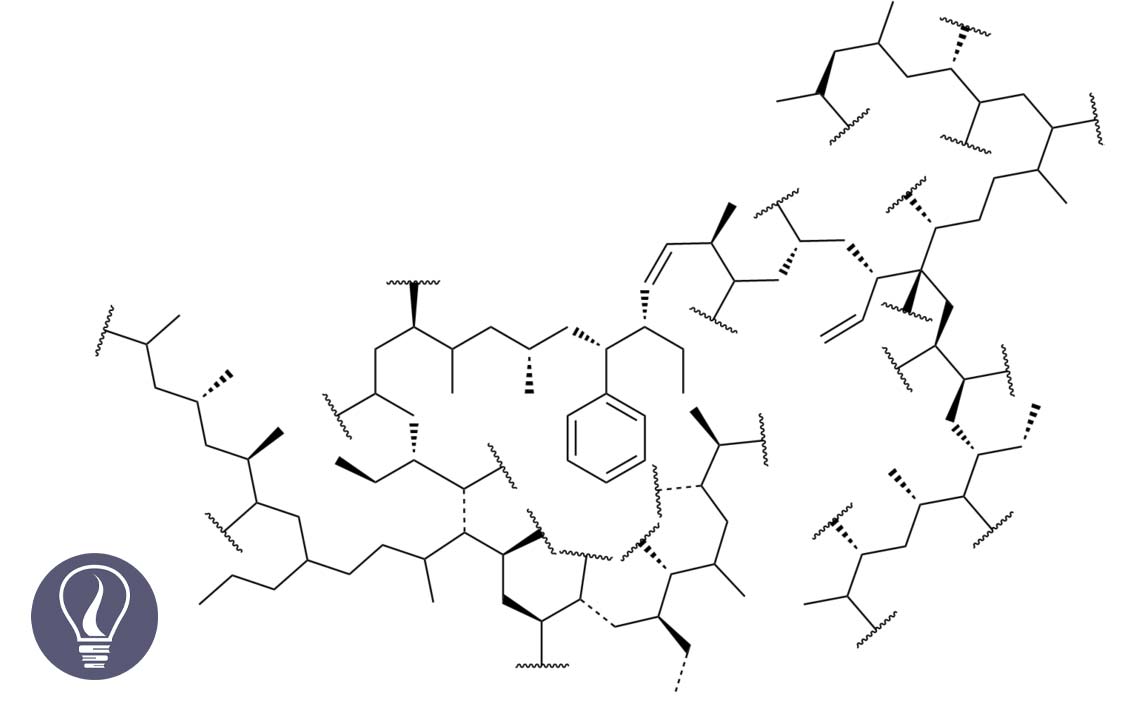

Polymer molecules are macromolecules that are formed by reacting micro-molecules which are known as monomers. Generally, it needs initiators to start the polymerization reaction. So, the main components of a polymerization reaction are monomers and initiators. There are four main types of polymerization techniques.
According to the nature of the reaction media, the polymerization process can be divided into two groups heterogeneous and homogeneous.
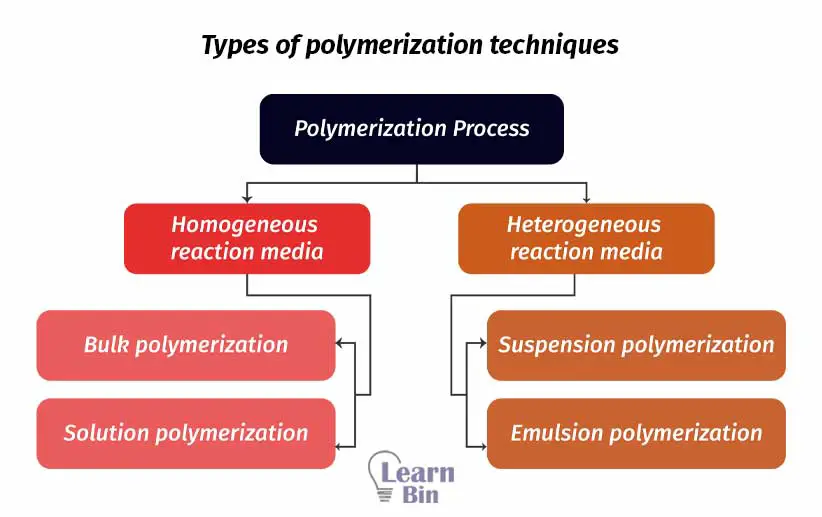
Bulk polymerization also known as mass polymerization is the simplest polymerization technique. The reaction media is only contained with monomers and initiators. Sometimes the reaction media can be added chain transfer agent to control the molecular weight. Monomers that are used for bulk polymerization are in a liquid phase. Initiators are dissolved in the monomer. This makes a homogeneous mixture of monomers and initiators.
Generally, a polymerization reaction is an exothermic reaction. Therefore, as polymerization proceeds, the temperature of the system is rapidly increasing. So, the reaction media should be properly agitated and externally cooled. However, the viscosity of the system is increased as the polymerization proceeds. So, the agitation and mixing will be difficult.
The bulk polymerization method results in the highest yield per unit volume. Because the reaction media contains only monomers and initiators. So, the purest form of the polymer is obtained. Due to the high purity of the polymer, the product has optical clarity.
Examples
Due to the high viscosity of the media, mixing becomes more difficult. This results in broad molecular weight distribution.
Due to the high viscosity of the media, the molecular motion of growing polymer chains is restricted. Therefore, the collision between molecules becomes less and termination becomes difficult. So, the polymerization rate increases enormously. This is called auto-acceleration. Sometimes the resulting heat from the exothermic reactions leads to an explosion.
To overcome the disadvantages of the bulk polymerization method, solution polymerization has been introduced. Here monomers and initiators are dissolved in a suitable inert solvent. Sometimes catalysts can be dissolved in the solvent, or they remain as suspension. The heat released by the polymerization reaction will be absorbed by the solvent. So, the solvent will enhance the heat capacity. Due to the proper heat transfer, there is no auto-acceleration. The viscosity of the system also not be increased.
After the reaction is completed, the solvent is removed by evaporation or precipitation in a non-solvent. But traces of impurities will remain in the final polymer. Therefore, the yield per unit volume is lower than bulk polymerization. Due to the solvent in the reaction media, it is difficult to obtain high molecular mass polymers.
The solution polymerization technique is widely used where the polymer is used in solvent forms like adhesives and coating compositions. After the adhesive or a coating is applied on a surface the solvent will evaporate.
Examples
The main disadvantage of bulk polymerization is the difficulty of heat transfer. And the disadvantage of solution polymerization is obtaining low molecular weight polymers and impurities. To overcome those problems suspension polymerization technique has been introduced.
The monomer is suspended in a monomer-insoluble liquid. Mostly water is used as the suspension media. In water, monomer forms small droplets. In other words, an entire bulk polymerization system has been broken down into innumerable small droplets. These droplets are isolated from each other. So, each small droplet act as a tiny bulk reactor. However, these droplets are not stable. In order to stabilize monomer droplets, constant stirring is required. To maintain the specific size of the droplets, agitators are used. Monomer-water ratio and the speed of the agitation directly affect the size of the droplets.
Due to the aqueous phase, heat transfer is much more efficient in suspension polymerization. Because the heat generated in the droplets directly transfers to the water. Water has a large heat capacity, and the viscosity of the system is not increased.
Because polymerization occurs in tiny droplets, kinetic chain length control is quite good. Therefore, the final polymer has a narrow molecular weight distribution. The final product is obtained as spherical beads. So, this process is also known as beat polymerization or pearl polymerization.
After polymerization is completed, the aqueous phase is easily removed by filtration. Polymer beads can be used in dry form or dissolved in a suitable solvent for further processing.
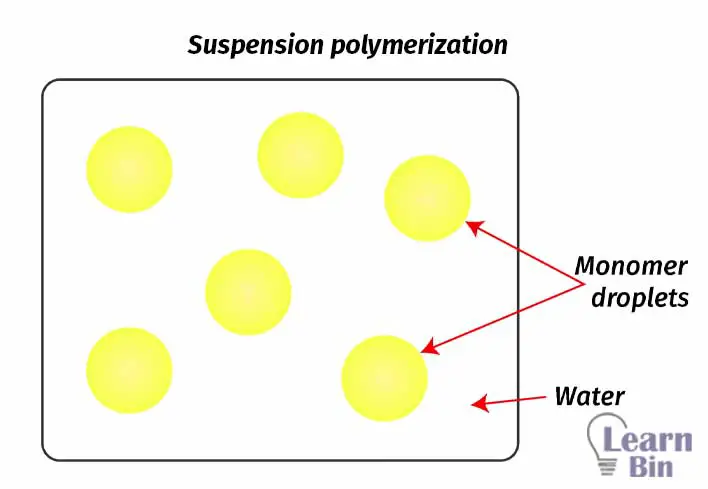
The main disadvantage of suspension polymerization is the monomer droplets are not stable and it requires constant agitation. So, the emulsion polymerization process has been developed. The emulsion polymerization technique is the widely used method in the industry.
Similar to suspension polymerization, here monomers are dispersed in an aqueous medium as fine droplets by stirring. But these droplets are stabilized in the aqueous phase by using surfactants (surface active agents). Initiators are water-soluble, and they are dissolved in the aqueous phase. Monomers are not dissolved in water.
Surfactant molecules are polar molecules that have a hydrophobic tail (hydrocarbon chain) and a hydrophilic head (ionic part). When monomers are dispersed in an aqueous phase, hydrophobic tails of the surfactants will surround monomer droplets and form micelles. Here, hydrophilic heads will arrange to the outwards of the micelle. These micelles are stable in the aqueous phase. Inside the micelles, a polymerization reaction occurs. Dissolved initiators in the aqueous phase will enter the micelle through the surfactant layer.
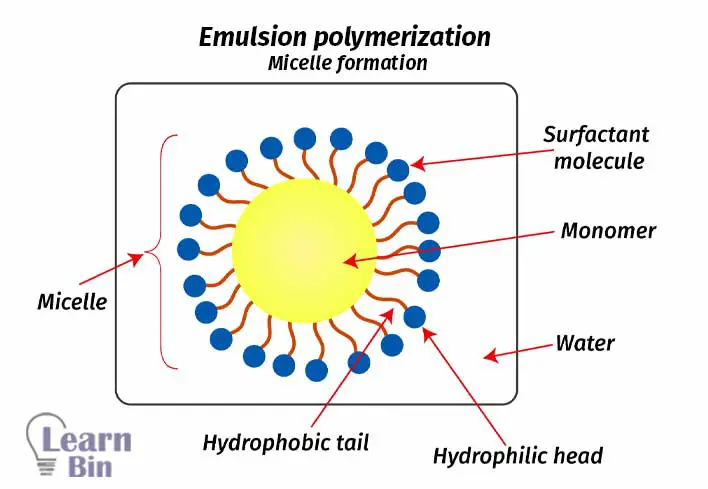
After polymerization is completed, polymer molecules are surrounded by a surfactant layer. These particles are finely dispersed in an aqueous phase, and they are stable. This type of system is called latex. This latex can be used as emulsion paints and adhesives. Or the aqueous phase is removed by the destabilization of emulsifiers.
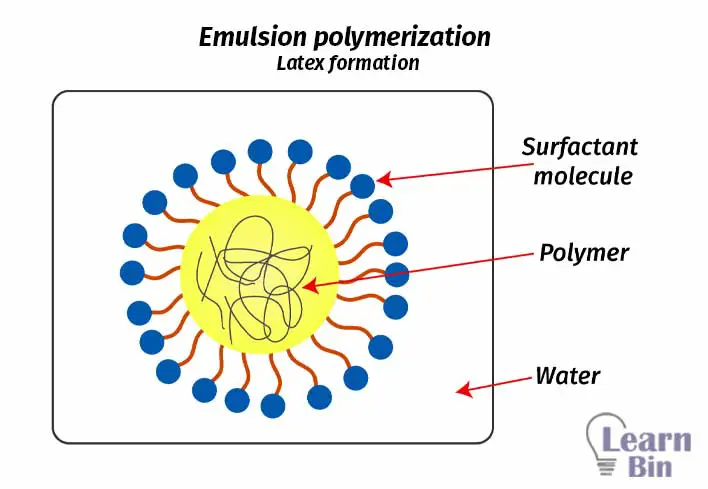

The cover image was designed using an image by Smamzrk, licensed under CC0, via Wikimedia Commons
Nice use full information